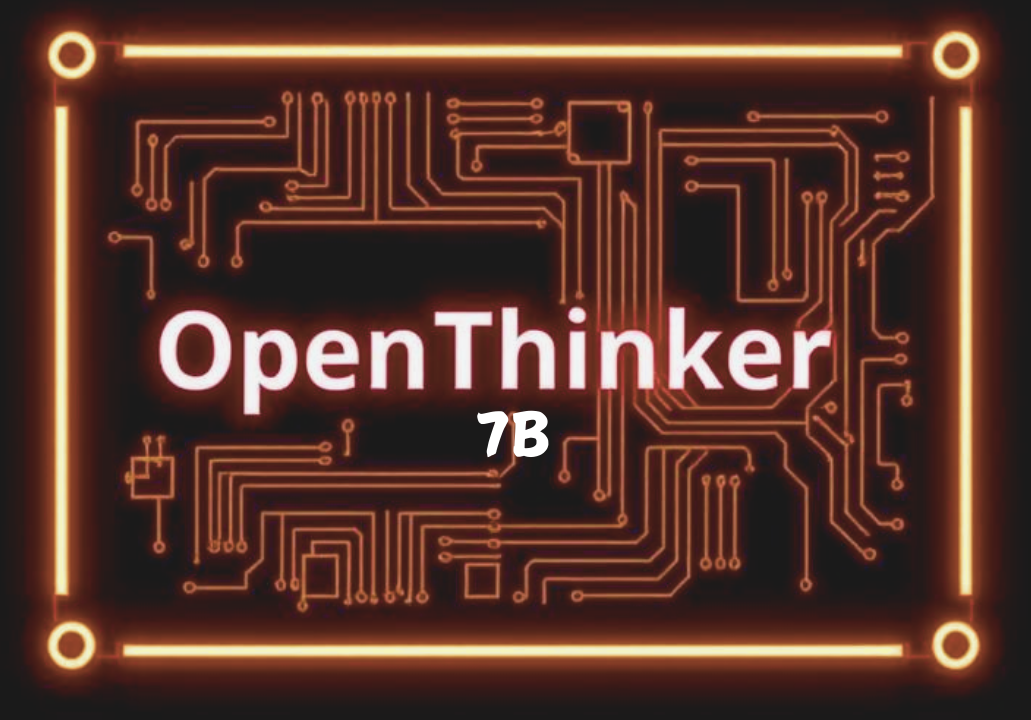Install & Run OpenThinker 7B on macOS: Step-by-step Guide

The installation and execution of OpenThinker 7B on macOS present a set of intricate technical challenges. OpenThinker 7B is an advanced language model designed for applications ranging from natural language generation to semantic analysis.
This article provides a rigorous, systematic guide detailing the prerequisites, installation process, and troubleshooting strategies essential for successfully deploying OpenThinker 7B on macOS.
Prerequisites
Prior to initiating the installation, it is imperative to ensure that the macOS environment satisfies the following criteria:
- macOS Version: The system must be running macOS 10.15 (Catalina) or a more recent iteration.
- Hardware Requirements: A minimum of 8GB of RAM is recommended to facilitate efficient model performance, with increased memory allocations enhancing computational responsiveness.
- Docker: Since OpenThinker may employ containerization, install Docker from Docker’s official website.
- Git: Ensure that Git is installed for repository management:
brew install git
- Python: OpenThinker mandates Python 3.8 or later. Install the appropriate version via Homebrew:
brew install python
- Homebrew: A package management system for macOS that streamlines software deployment. If Homebrew is not already installed, execute the following command:
/bin/bash -c "$(curl -fsSL https://raw.githubusercontent.com/Homebrew/install/HEAD/install.sh)"
Installation Procedure
Step 1: Clone the OpenThinker Repository
Launch the terminal and retrieve the OpenThinker repository from GitHub:
git clone https://github.com/OpenThinker/OpenThinker.git
Navigate into the cloned directory:
cd OpenThinker
Step 2: Establish a Virtual Environment
To ensure an isolated and conflict-free package installation, create a virtual environment:
python3 -m venv openthinker-env
source openthinker-env/bin/activate
Step 3: Install Dependencies
With the virtual environment activated, install the requisite dependencies enumerated in the requirements.txt file:
pip install -r requirements.txt
Step 4: Obtain the Model Weights
OpenThinker necessitates pre-trained model weights to function effectively. These can be acquired from the official repository or another authenticated source. Once downloaded, position them within a dedicated subdirectory of the project structure.
Step 5: Define Environment Variables
Environmental parameters must be properly configured to reference model weights and configuration files. This can be accomplished by generating a .env file containing the following directives:
MODEL_PATH=/path/to/your/model/weights
CONFIG_PATH=/path/to/your/config/file
Replace /path/to/your/model/weights and /path/to/your/config/file with the actual directory paths.
Step 6: Execute OpenThinker
With all configurations in place, initiate OpenThinker using:
python main.py --config config.yaml
Ensure that config.yaml is the correct configuration file for the specific deployment.
Functional Utilization
Once operational, OpenThinker can be engaged via command-line execution or integrated into broader applications via API calls.
Example Applications
Text Generation
response = openthinker.generate("Elaborate on the impact of artificial intelligence in healthcare.")
print(response)
Summarization of Extended Text
long_text = "Machine learning is fundamentally reshaping scientific research, automation, and data analysis. With improved algorithms and computational power, AI is capable of extracting insights from vast datasets at an unprecedented scale."
summary = openthinker.summarize(long_text)
print(summary)
Sentiment Analysis for Automated Interpretation
text = "The user experience on this platform has been outstanding!"
sentiment = openthinker.analyze_sentiment(text)
print(sentiment) # Expected output: Positive
Integration with an AI-Powered Conversational Agent
def chatbot_response(user_input):
response = openthinker.generate(user_input)
return response
user_message = "Explain quantum computing in simple terms."
print(chatbot_response(user_message))
Troubleshooting and Optimization
If technical challenges arise during installation or execution, consider the following mitigation strategies:
- Dependency Resolution: Validate that all dependencies are correctly installed as specified in
requirements.txt. - Memory Management: Insufficient RAM may cause execution failures. Close redundant applications or upgrade hardware specifications.
- Containerization Issues: If leveraging Docker, ensure the service is active and correctly configured.
- Model Weight Accessibility: Confirm that the model weights are downloaded and placed in the designated directory.
- Configuration Verification: Scrutinize the
.envfile for accuracy and ensure all configuration parameters are correctly assigned.
Conclusion
Deploying OpenThinker 7B on macOS necessitates adherence to a structured workflow encompassing software prerequisites, installation procedures, and system configurations.
By following this methodology, users can effectively harness the capabilities of this sophisticated language model. OpenThinker offers a robust and extensible framework for advancing natural language processing initiatives, whether utilized for computational linguistics, artificial intelligence research, or application development.